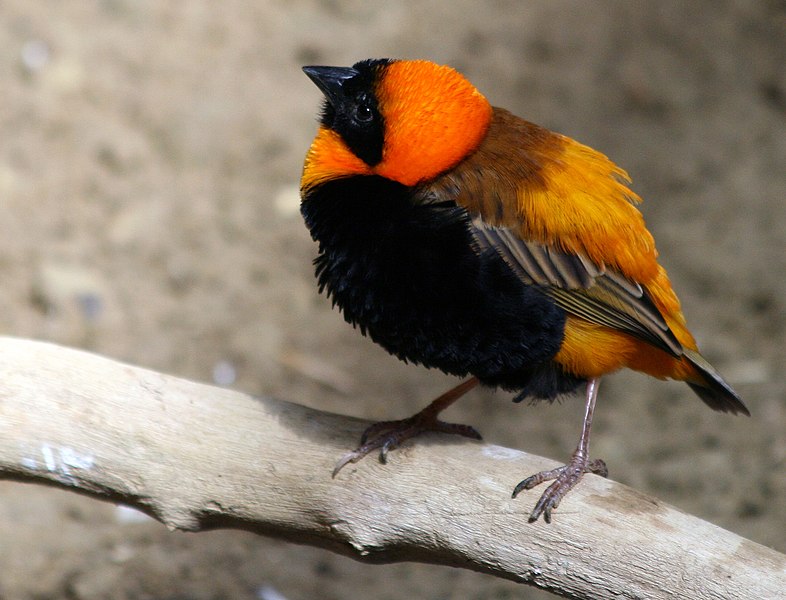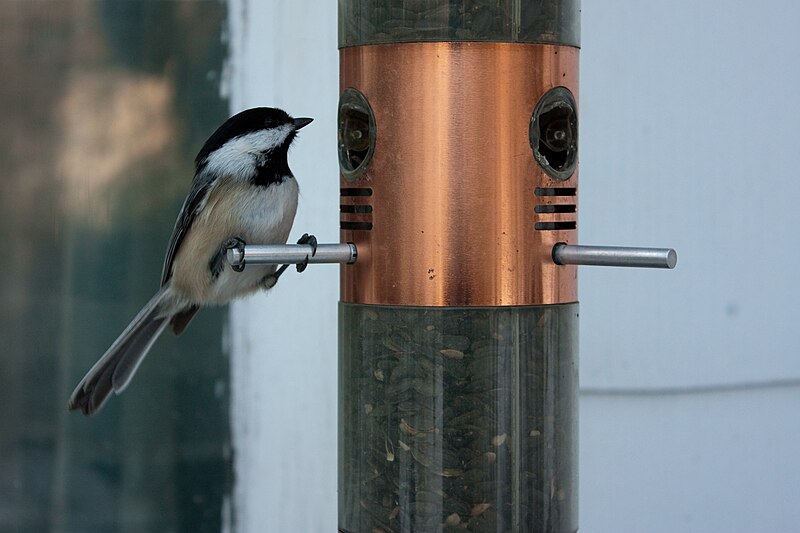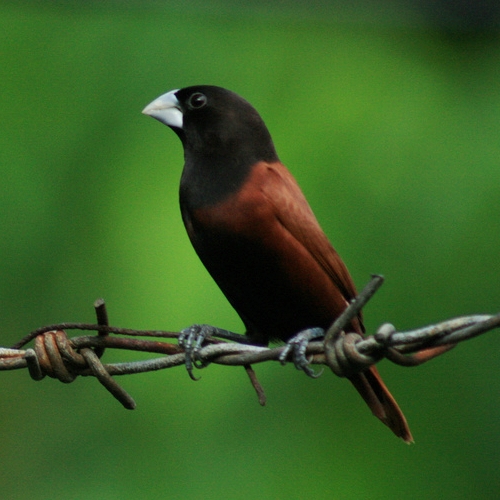 Among the Waxbills (Family Estrildidae) we find some of the most popular of all cage birds, most of which are referred to as “finches”. The related Weavers and Whydahs (Family Ploceidae), less commonly kept, are valued for their unique breeding and nest-building habits. Oddly enough, only a few species of True Finches (Fringillidae) have actually made their way into finch collections. Read More »
Among the Waxbills (Family Estrildidae) we find some of the most popular of all cage birds, most of which are referred to as “finches”. The related Weavers and Whydahs (Family Ploceidae), less commonly kept, are valued for their unique breeding and nest-building habits. Oddly enough, only a few species of True Finches (Fringillidae) have actually made their way into finch collections. Read More »
Category Archives: Bird diet
Feed SubscriptionFreeze Dried Mealworms – a Healthy, Convenient Food for Wild and Pet Birds
As I write this from NYC it is not yet officially winter, but I’m looking out over waist-high snow drifts. So I’m inspired to consider a special treat for the visitors to my bird feeders, and one which finches, softbills and other pets relish as well – mealworms.
The Importance of Insects
A bag of Freeze Dried Mealworms is a very useful item for both pet keepers and wild bird enthusiasts to have on hand. Providing both calcium and much-needed protein, insects continue to figure in the diets of many birds even during the coldest months. Although not visible to us, insects are always about – some species hibernate, while others pass the winter as eggs or pupae. These are avidly sought by many typical feeder visitors, but especially Woodpeckers, Chickadees, Nuthatches, Blue Jays and Juncos. Insects become especially important in late winter, when female birds need to increase their calcium stores in preparation for egg-laying.
Read More »
Wild Bird Feeding Extras – Grit, Calcium, Salt and Water – Part 2
 In Part 1 of this article we looked at a few nutrients that wild birds are hard-pressed to find in winter. Today we’ll continue with some other ideas that might make life easier for your avian friends. Read More »
In Part 1 of this article we looked at a few nutrients that wild birds are hard-pressed to find in winter. Today we’ll continue with some other ideas that might make life easier for your avian friends. Read More »
Hand Rearing Black-Headed Mannikins and Other Finches

While working for a bird importer in years past, I had the opportunity to hand-raise a number of finch chicks. The following information is based on recent and past experiences with the Black-Headed Mannikin (Lonchura atricapilla), also known as the Black-Headed Nun or Munia, but could be applied to a number of related birds.
The youngest chicks I’ve worked with were 4-6 days old and, like most Mannikins, had hatched in a domed nest (please see photo). They were reared in plastic containers lined with dry grass in an incubator set at 90 F (range: 86-93 F).
Feeding Nestlings
I feed very young finches at 2 hour intervals, from 5 or 6 AM to midnight at first, and cut back over 2 weeks or so to 6 AM – 8 PM. Hand Rearing Formula (warmed per directions) offered via syringe serves well as a base diet. Although not strictly necessary, to this I add a “drop” of peanut butter and 2 drops per syringe of sunflower oil. A bit of cooked egg yolk and a drop of Avitron, provided three times weekly, completes the feeding regime.
Despite their delicate appearance, healthy Mannikin chicks are ravenous. After a few days, they develop the amusing habit of raising one wing in order to ward off competitors…mini “jousting matches” sometimes break out!
Young Mannikins can only take a small amount at each feeding, and will choke or aspirate food into the lungs if it is forcibly squirted down their throats. The safest way to feed them is to gently release from the syringe just enough food to fill their mouths…at a frequency of every 2 hours, this will provide quite enough nourishment.
Care of Fledglings
 Upon fledging, the chicks should be fed on a 6AM – 8PM schedule until they begin pecking at food on their own. Most begin trying solid food on the fifth day after fledging, but this varies widely…close observation is very important at this point.
Upon fledging, the chicks should be fed on a 6AM – 8PM schedule until they begin pecking at food on their own. Most begin trying solid food on the fifth day after fledging, but this varies widely…close observation is very important at this point.
Their first meals should be offered on the cage floor, not in cups, to assure that they are aware of its presence. Seed-based Finch Nestling Food, Egg Food and cut sprouts should be available at all times.
Once the fledglings have begun to feed regularly on their own, you can gradually reduce the syringe feedings to 2-3 times per day. Continue this schedule until they lose interest in the syringe, which may take an additional 2-3 weeks. It is a mistake to rush the weaning process – birds decline in condition very rapidly at this age, and poor nutrition during the fledgling period will have lifelong consequences for their health.
Black-Headed Mannikins and related birds prefer to sleep in a nest or enclosed space, even outside of the breeding season. Fledglings raised together usually crowd into one covered nest, but provide extras in case of aggression.
Although generally quite hardy as adults, Mannikins are cold-sensitive as chicks. Until you are certain that their immune systems are functioning well, take extra care to keep the youngsters warm at night (a hot spot of 86-90 F, with an ambient temperature of 80-82 F, works well). A red or black night bulb, designed for use with reptiles, will provide heat without disturbing their day/night cycle.
Further Reading
Please see my article Introducing Mannikins for more information on these beautiful finches.
A video of Black-Headed Mannikins in the wild is posted here.
Black headed Finch image referenced from wikipedia and originally posted by SnowmanradioFinch nest image referenced from wikipedia and originally posted by Kguirnela
Grit, Calcium, Salt and Water – Wild Bird Feeding “Extras” – Part 1
While any food provided to wild birds is beneficial, there are a few items that are very important to their health, especially in the winter, but which are often over-looked by well-meaning avian enthusiasts.
Grit
Pigeons, Doves and many other birds must swallow small stones, sand and similar materials (“grit”) in order to break down seed coats and other foods before digestion can take place. Grit is often in short supply during the winter, being either covered with snow or frozen to the ground (in NYC, I’ve observed English sparrows on buildings, pecking at gravel within brick mortar).
You can help winter birds along by providing pet bird gravel, sand and oyster shell (available at garden supply shops) in snow-free locations. It is best to keep grit separated from food, as it will be used slowly and may become contaminated with feces if it lies out too long.
Calcium
Calcium is especially important as winter turns to spring, since female birds utilize this mineral to produce egg shells. However, insects, the main source of calcium for many species, are often scarce at this time of the year. Our Wild Bird Mealworms will be most appreciated by nearly every bird that visits your feeder. You can also supply calcium by mixing oyster shell and ground-up eggshells into your wild bird food.
Food and Shelter
Of course, food and shelter are important concerns year-round. Please be sure to check out our extensive line of bird and wildlife foods, houses and feeders.
Next time we’ll cover a few additional winter-feeding essentials.
Further Reading
Winter is a great time to try your luck at hand-feeding wild birds. Please see Hand Taming Wild Birds for more details.
Woodpeckers, chickadees and other acrobatic birds will put on quite a show if given the chance – please check out Feeding Woodpeckers and Other Avian Athletes for details.
 That Bird Blog – Bird Care and History for Pet Birds
That Bird Blog – Bird Care and History for Pet Birds
